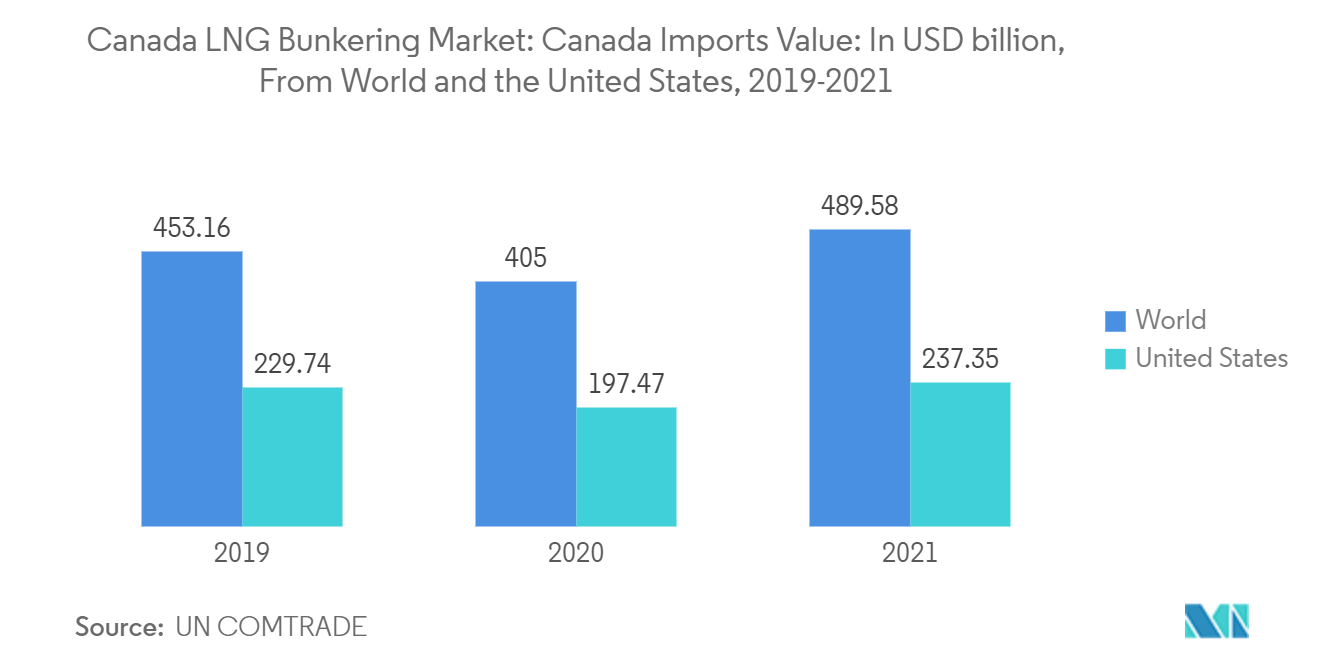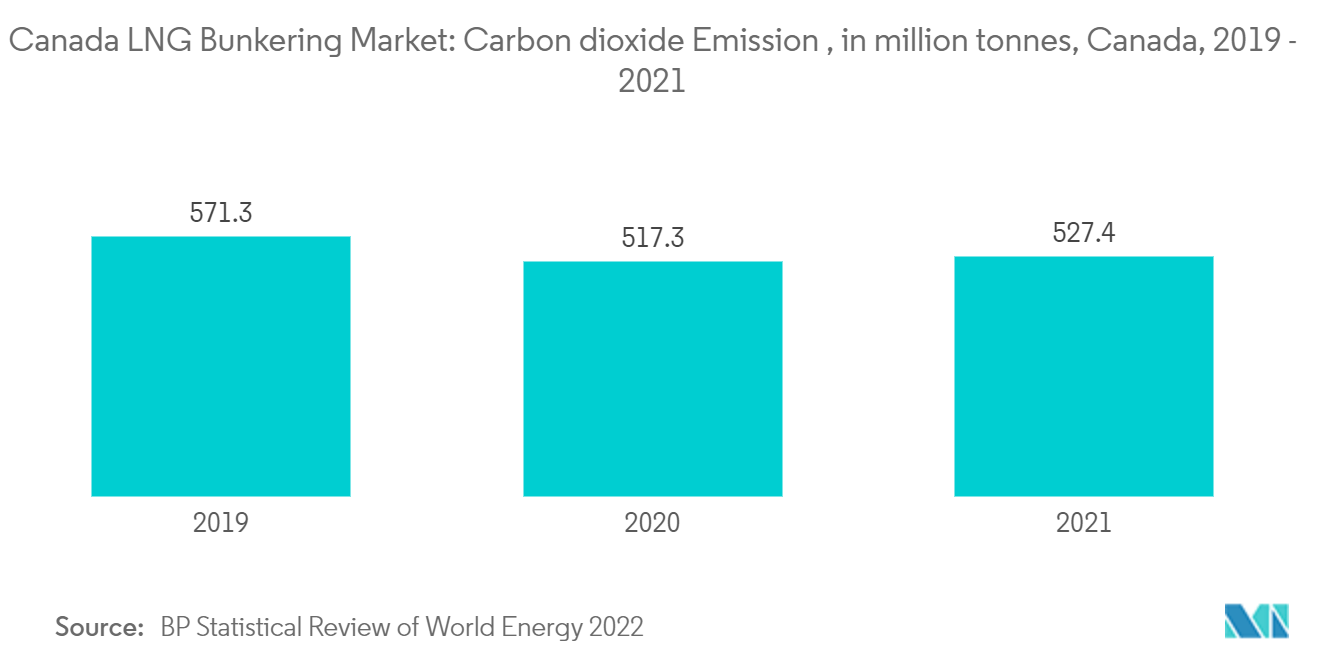Market Trends of Canada LNG Bunkering Industry
Ferries & OSV to Dominate the Market
- Ferries are vessels used to carry cargo across the water; offshore support vessels (OSV) are required during oil exploration and construction work in an offshore location.
- These vessels operate primarily on heavy fuel oil and marine gas oil. However, government regulations regarding the emission of sulfur, carbon dioxide, and other pollutants have been encouraging the use of LNG as a fuel in the vessels.
- Ferries and other coastal traffic and offshore support vessels are expected to be the first marine vessels in Canada to use LNG. After that, other marine vessels are also expected to add to LNG demand.
- In March 2022, the Canadian firm BC Ferries announced an LNG-powered vessel was expected to replace BC Ferries' diesel-powered Mayne Queen on the Swartz Bay-Southern Gulf Islands in Canada. The new vessel is 107 meters long and can carry at least 138 vehicles and up to 600 passengers and crew.
- These vessels operate primarily on heavy fuel oil and marine gas oil. However, government regulations regarding the emission of sulfur, carbon dioxide, and other pollutants have been encouraging the use of LNG as a fuel in the vessels. by the Port of Vancouver, the biggest port in the country.
- In 2021, the imports of goods from Canada into the United States were expected to be increased by approximately 20%. Hence, the increase in imports positively affected the maritime industry, manifested by an increase in the cargo handled by the Port of Vancouver, the biggest port in the country.
- Thus, the growing number of ferries and OSVs that use LNG fuel and the switch to LNG fuel are likely to drive the demand for LNG bunkering facilities in the country over the next few years.

Restrictions on Sulfur Oxide Emissions to Drive the Market
- In October 2016, the International Maritime Organization (IMO) adopted stricter regulations on emissions, most prominently restrictions on sulfur oxide (SOx) emissions, which came into force on the 1st of January 2020.
- With the new 2020 regulations, ships would have to use fuel oil with a sulfur content of no more than 0.50% m/m.
- Also, the Canadian government has made commitments to a significant reduction in greenhouse gas emissions, and the country has an abundant supply of natural gas.
- The LNG-fueled ships are expected to account for over 60% of the new ship orders. With the growing number of LNG-fueled vessels, the demand for LNG as a marine fuel is expected to grow significantly during the forecast period.
- Hence, such developments are expected to fuel the demand for LNG bunkering services in Canada during the forecast period.


